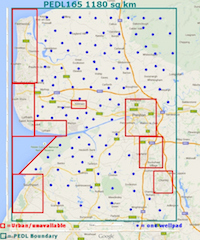Whose fault will it be?
 Fault lines are in the news again with the two recent significant quakes in the UK – Wales 2 weeks ago and Cumbria just this morning. How careful do they need to be about fracking near a fault line?
Fault lines are in the news again with the two recent significant quakes in the UK – Wales 2 weeks ago and Cumbria just this morning. How careful do they need to be about fracking near a fault line?
In 2012 the Refine Group published a study which suggested that
The chances of rogue fractures due to shale gas fracking operations extending beyond 0.6 kilometres from the injection source is a fraction of one percent, according to new research led by Durham University.
According to an article published by Refine today
“Microseismic data was used in previous Durham University research from 2012. This suggested a minimum vertical distance of 600m between the depth of fracking and aquifers used for drinking water, which now forms the basis of hydraulic fracturing regulation in the UK’s Infrastructure Act 2015.”
The same article states that by inputting revised parameters into their model they have now decided that:
The risk of man-made earthquakes due to fracking is greatly reduced if high-pressure fluid injection used to crack underground rocks is 895m away from faults in the Earth’s crust, according to new research.
The recommendation, from the ReFINE (Researching Fracking) consortium, is based on published microseismic data from 109 fracking operations carried out predominantly in the USA.
So it would appear that the limits imposed by the 2015 Infrastructure Act are based on data which the Refine Group now considers to be about 50% underestimated.
And we are supposed to believe that our regulations are “gold standard”? How long will it take for them to update the regulations I wonder? That gold certainly needs to be ReFined a bit more!

































